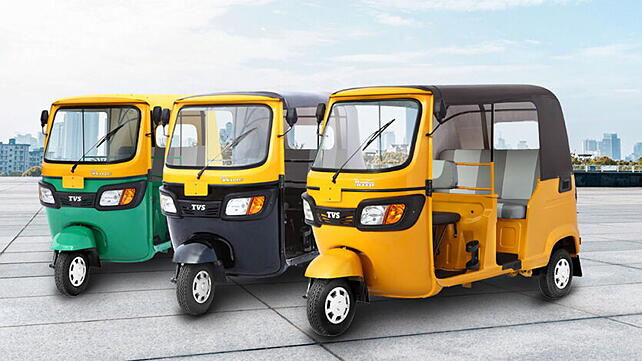
Lockdowns across states, dealerships remaining shut for major part of the month and OEMs pushing forward their annual maintenance activities have resulted in lower retail as well as off-take in May 2021, stated a report by CRISIL Research, India’s largest independent integrated research house.
The second wave of COVID-19 dented the passenger vehicle industry real hard. Retail sales in May 2021 registered a decline of 59% MoM, whereas wholesale declined by 64% MoM.
In its analysis of the segment, CRISIL noted that a good percentage of cars sold in May would not have been registered in May due to lockdowns and RTOs not being fully functional.
While these vehicles will be up for registration this month, healthy bookings and the growing need for personal mobility is expected to push the positive trend in the passenger vehicle industry in the times to come, CRISIL reported.
Earlier estimates by CRISIL projected a 13-15% growth in FY22 in overall annual domestic sales of passenger vehicles, boosted by an estimated 11-13% growth in passenger cars to reach 1.65-1.75 million units, and a 15-17% growth in UVs and vans to reach 1.3-1.4 million units in sales. The industry estimate for total passenger vehicles sales in the domestic market is 3-3.2 million in FY22.

Two-wheeler sales continue to be stressed
In the two-wheeler segment, retail sales fell 53% MoM, and off-take was down 65% in May 2021. The second wave of the pandemic particularly impacted rural India, leading to subdued demand for motorcycles. Demand for scooters, similarly, was impacted due to schools, colleges and workplaces staying closed.
CRISIL stated that the decline in retail was lower than wholesale, leading to inventory correction at the dealer end.
As in the case of four-wheeler OEMs, many manufacturers of two-wheelers had preponed their annual maintenance shut down and closed their plants to divert the oxygen required for manufacturing by auto component players for medical use.
For the full fiscal, improvement is expected on a low base. A 3-5% growth is estimated for the 2W segment in FY22, with volumes in the range of 15.7-16 million units. This would, however, still fall short of the total segment volumes of FY20 (17.4 million units) and FY19 (21.2 million units).
Motorcycles are estimated to grow marginally over FY21 numbers. In FY21, motorcycle volumes were approximately 10 million units, which are expected to grow 2-4% to 10.3-10.5 million units in FY22. Similarly, scooter sales are estimated to reach 4.7-4.9 million units in FY22, marginally up from the FY21 volumes of 4.5 million units.
The moped sub-segment, which has remained stable over the last three years, is expected to see a moderate 1-3% growth to 0.62-0.64 million in FY22.
FY22 expected to be better for 3Ws
Nationwide lockdown led to lower mobility, and increase in preference towards personal mobility led to lower utilisation of three-wheeler passenger vehicles. On a MoM basis, retail sales declined by 76%, whereas wholesale declined by 91% on a low base of May 2021.

CRISIL also said the impact on the cargo segment is expected to be limited due to continued requirement for essential services like FMCG, vegetables, etc.
The agency has forecast that the revival in the three-wheeler segment would be restricted amidst the re-emergence of the virus. In terms of volumes, the passenger 3W segment is estimated to grow 13-15% YoY in FY22 to 150,000-155,000 units. This is still a considerable drop from the 572,000 units the segment accounted for in FY19.
The cargo segment, meanwhile, is estimated to grow to volumes of 85,000-90,000 units, thus recording an estimated YoY growth of 5-7% in FY22. Compared to FY19, the volumes drop in the cargo segment isn’t as significant as in the passenger segment. However, a 30% drop over the course of three fiscals, is still huge.
Overall, there is massive drop in volumes in the 3W segment over the last three fiscals. From the highs of 701,000 units in FY19, 3W sales dropped 69% to 216,000 units in FY21. The current fiscal is estimated to see a growth of 10-12% YoY, reaching volumes in the range of 237,000-242,000 units, CRISIL estimates suggest.
CV sector
In the commercial vehicle segment, the second wave of the pandemic put brakes on its gradual recovery seen in the last three quarters. On a MoM basis, retail sales declined by 67% for LCVs and 63% for MHCVs.
CRISIL expects the overall CV industry to recover and grow 23-25% in FY22, with volumes in the range of 700,000-703,000 units. Should the segment be able to deliver these numbers, it would mean being very close to FY20 volumes, when the CV segment accounted for 717,000 units.
The strongest growth within the CV segment is expected to come from the IMHCV cargo sub-segment. An estimated 44-46% YoY growth in FY22, the IMHCV cargo segment is expected to deliver approximately 222,000-224,000 units in the current fiscal.
The ULCV cargo segment is also expected to deliver 21-23% growth YoY, while SCV cargo and buses are expected to grow 15-17% and 14-16% respectively. The SCV segment, in fact, is estimated to do better than FY20 volumes this fiscal.
Outlook
The onset of cyclones early this year has resulted in the farming activities starting early. CRISIL reported that land preparation activities were brought forward by approximately 20 days. The agency had reported even earlier that agricultural field activities have not witnessed any obstruction/problems on account of the second wave.

The government supported the farmers to assure timely harvest of rabi crops, leading to them receiving cash from their rabi proceeds, which meant higher cash flow.
With the unlocking process being initiated across the country, the industry is expected to slowly return to business. But concerns remain. There continues to be a sense of fear and panic among the masses with a third wave of the pandemic looming large. Nonetheless, with good monsoons and cash availability, vehicle buying is expected to resume. And that is good news for the industry.

